




THE FLAGSHIP PUBLICATION OF THE SINGHEALTH DUKE-NUS ACADEMIC MEDICAL CENTRE Sep-Oct 2023 www.sgh.com.sg www.singhealth.com.sg MCI (P) 002/07/2023 Receive latest updates via our free electronic mailer. Scan the QR code and subscribe now!
velcro, no buttons Nurses in SGH regularly brainstorm for ways to smoothen processes and improve patient experience, including designing a more effective patient gown Read more on page 02 10 HealthierSG You should go for health screenings even if you feel or look fine 13 People A community hospital does not equate to slow medicine 15 HealthWatch Understanding surgery cost estimates
No
PUBLISHERS
CO-PUBLISHERS
CONTENT ADVISORS
Audrey Lau, Jennifer Wee
EDITORIAL TEAM
Lim Mui Khi, Domenica Tan, Jenny Ang, Celine Sim
Read Singapore Health online at www.singhealth.com.
sg/singaporehealth
PUBLISHING AGENT
ThinkFarm Pte Ltd


Managing Director Christopher Tay

Head, Editorial
Chua Kim Beng
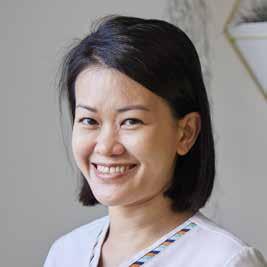
Head, Creative Lee Lily
Head, Client Relationship
Jessie Kek
For advertising enquiries, please call 6831 1299 or email advertise@thinkfarm.sg
All rights reserved. Copyright by Singapore Health Services Pte Ltd (registration no.: 200002698Z). Opinions expressed in Singapore
Health are solely those of the writers and are not necessarily endorsed by SGH, SingHealth Group and/or Thinkfarm Pte Ltd (registration no.: 201226362G), and their related companies. They are not responsible or liable in any way for the contents of any of the advertisements, articles, photographs or illustrations contained in this publication. Editorial enquiries should be directed to the Editor, Singapore Health 168 Jalan Bukit Merah, #13-01 Surbana One, Singapore 150168, or email: singaporehealth@singhealth.com.sg.
Unsolicited material will not be returned unless accompanied by a self-addressed envelope and sufficient return postage. While every reasonable care will be taken by the Editor, no responsibility is assumed for the return of unsolicited material.
ALL INFORMATION CORRECT AT TIME OF PRINTING. MCI (P) 002/07/2023. Printed in Singapore by Times Printers Pte Ltd (registration no.: 196700328H).
IV NIMBLE overcomes the limitations of the silicone mannequin arm with a 3D-printed hand and virtual avatar — using digital technology and data analytics — that give feedback to users and trainers, e.g. the cannula was inserted correctly (angle, depth and pressure).
It pays to be NIMBLE
The system responds to speech, helping users to hone their verbal interactions with patients, says Staff Nurse Dyal Singh.
With their ears and eyes on the ground, nurses are often best placed to spot bottlenecks and inefficiencies in processes that hamper the smooth running of their wards or clinics.
At Singapore General Hospital (SGH), nurses and their colleagues in other disciplines regularly volunteer to brainstorm for ways to smoothen processes. Doing so also leads to better communication and understanding among different departments across SGH. Three of these projects took the highest awards at the twice-yearly in-house IQC assessments, which are run in conjunction with Singapore Productivity Centre.


Hands that go, “Ouch!”
Finding the right vein — typically at the wrist — and then inserting and guiding a
by
needle with a small plastic tube into it for medications and fluids to be delivered can be a scary experience for a new nurse.
The procedure must be done swiftly and accurately, otherwise, ‘fishing’ or repeatedly poking to find a suitable vein can cause pain and bruising or, worse, phlebitis (inflammation of the vein).
One of the most important nursing skills, intravenous (IV) cannulation is not easy to master even with the rigorous training that nurses undergo. To reduce the incidence of complications and shorten the time to attain mastery of cannulation, an SGH team developed a training system called IV NIMBLE (Intravenous Nursing Innovation for Mobility-based Learning) that employs digital technology and data analytics.
“We hope new nurses and even medical students will feel more confident and be better equipped to perform cannulation after training on IV NIMBLE,” said Ms Andrea Choh, Senior Nurse Manager, SGH. “We also aim to reduce complications like bruising and inflammation that can occur when the cannula is inserted incorrectly,” added Ms Choh, the project lead.
The sensor worn on a finger (a glove in the earlier version) detects whether the trainee has inserted the needle into a vein correctly. Capturing such information was developed after close observation of nurses performing cannulation, says Mr Yeo Joo Chuan, Co-founder and CEO, Microtube Technologies Pte Ltd, one of two partners involved in IV NIMBLE’s development.
A virtual patient avatar that responds to conversation, the system includes a pressure sensor and a 3D-printed hand with changeable materials to mimic various types of muscle, skin and veins. It is able to gauge the pressure exerted, how the cannula is inserted, react

when the cannula is inserted wrongly, and show bruising and articulate pain.
Conventional training, in contrast, is unrealistic as it involves inserting the cannula into a silicone mannequin arm, which is modelled on a male sportsman with veins that are obvious and easy to locate. In reality, nurses need to cannulate on many types of arms, with different types of skin, muscle, tissue and veins. “Elderly patients, for one, have thinner skin, thinner veins,” said Ms Choh.

The conventional training arm cannot ‘feel’ pressure or resistance as it is static and does not provide sensory and other feedback for review and identification of areas for improvement. The system also trains students in speaking to patients by capturing interactions with the avatar for review.
An immersive gamified training module co-developed with industry partners, Serious Games Asia (SGA) and Microtube Technologies, the system lets students train at increasingly difficult levels of the procedure. In a June–July 2021 trial, 120 nurses underwent IV NIMBLE training, with the results showing a 74–76 per cent first-time cannulation success rate, and the ability of the avatar to converse with nurses speaking in different accents, reflecting the countries that SGH nurses come from. Based on feedback from the pilot, the second-generation NIMBLE is able to operate wirelessly, have four virtual patient avatars and 3D-printed hands with commonly seen medical conditions such as elderly patients with fragile skin. Farther out, the system can be adapted for training of other skills

02 CoverStory 03
Besides taking care of patients’ immediate well-being, nurses at SGH take it upon themselves to regularly look at ways to improve processes to enhance patient experience.
Chua Kim Beng and Candice Cai
®
Ms Andrea Choh
Senior Nurse Manager, Singapore General Hospital
We hope new nurses and even medical students needing to learn cannulation will feel more confident and be better equipped with the skills to do so after training on IV NIMBLE.
PHOTOS: VERNON WONG
ties for easy access for examination and dressings. The



has

We wanted a nice balance between safety and practicality, yet also for the gown to be functional.
Ms Huang Liwen Nurse Clinician, Singapore General Hospital


The most useful health app for all your needs!
APPOINTMENT
View and reschedule your appointments with ease!

PAYMENT
Pay anywhere, after consultation or treatment.

ORDER MEDICINE
Arrange for FREE delivery of your medicines!
TEST RESULTS & REPORTS
See all your test results here!
HEALTH TOOLS


Track your blood glucose, blood pressure, weight and more!




like venepuncture for blood collection, chest tube insertion and other invasive procedures, said Ms Choh.
Velcro, buttons are no-nos
For patients, surgical gowns must be comfortable, easy to wear, safe and protect their modesty. For the medical team, the gown must serve other purposes — provide easy access to intravenous lines, urinary catheters and wound-drainage tubings, wounds for dressing, is easy to put on and remove, durable and safe. At the same time, hospital gowns, including for surgery, are ordered and supplied by the thousands at a time. Like staff uniforms, patient gowns are made to last many years.
The gown was revamped in 2019 when a new supply contract for it was due, with feedback taken in its redesign,
said Nurse Clinician Huang Liwen, who led a 10-member team to look into the redesign. She said: “We wanted a nice balance between safety and practicality, yet also for the gown to be functional.”


The old gown had too many ties at the back, which can confuse or pose challenges. Velcro fastenings may be easy to use, but they cannot withstand repeated heavy washing and ironing. Buttons may come loose and get lost in surgical incisions. For breast reconstruction patients, side slits are important for easy access to wounds.
The redesign took six months, with feedback from the team’s mainly theatre and surgical ward nurses. The final product was a green gown with a lower neckline, allowing nurses and doctors easy access to invasive lines. It can also be worn sleeveless, depending on the needs of the patient. The third feature — a side slit — allows medical staff easy access to wounds. The number of ties was also reduced and placed at the shoulders and sides so patients can easily don the gown by themselves. This design also better protects patients’ modesty, added Ms Huang, noting that patients’ satisfaction rate rose to 80 per cent from 50 per cent in their pilot study.
But the entire process — from conceptualisation to production — did not come without challenges, with the team going through several prototypes before landing on the final solution. Logistical issues brought about by the pandemic caused delays to the production and shipment of the gowns. Eventually, about 6,000 new gowns were rolled out hospitalwide in March 2023.
Carers are hydration partners
Complications from dehydration can contribute to the overall functional decline of elderly patients. Patients often do not drink or eat enough, partly because their taste and swallowing functions change as they age. Some also worry about drinking too much and having to call for nurses’ help to go to the toilet. “Inadequate hydration and oral intake can impede patients’ recovery, and increases the risk of functional decline, contributing to a longer hospital stay,” said Dr Rachel Ng, Consultant, Department of Geriatric Medicine, SGH.
While patients are given a target amount of water to drink every day, keeping track of patients’ fluid intake can often be a challenge, especially as their different medical conditions require different hydration needs, said Ms Aines Manickam, Nurse Clinician, SGH.

“Realising how frail most patients are and how often their water intake is inadequate, we tried our best to address this issue,” said Ms Manickam, who led a group of mostly ward nurses in a project to improve patient hydration.
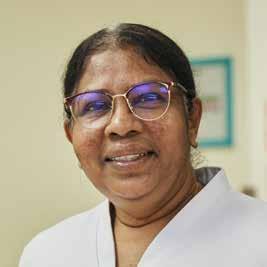
The team’s first solutions included introducing fluid rounds, during which nurses regularly give patients water to drink, and posters to remind staff to conduct the rounds. Another initiative was the use of flip charts highlighting the importance of hydration. These charts — placed at patients’ bedsides — contain simple pictures and words printed in four languages, thus
surmounting some language barriers. A fluid schedule in the flip chart also helps nurses monitor the patient’s fluid intake. But perhaps one of the more critical interventions, said Ms Manickam, was in educating nursing staff — and caregivers — on the importance of adequate hydration. It is an effort that requires all hands on deck and a “multi-component, multidisciplinary approach” across departments, said Dr Ng. The result after three months showed an increase in the number of elderly patients who met their daily fluid requirements from 15 to 60 per cent.
Dr Rachel Ng Consultant, Department of Geriatric Medicine, Singapore General Hospital

04 CoverStory 05
Patients have different fluid intake targets, so charts help remind ward staff as well as family members to offer water to patients, says Ms Manickam.
(Above) Nurse Clinician Aines Manickam shows the multi-lingual flip chart that explains the importance of hydration.
Ms Huang Liwen (left) is wearing the new green gown, which has slits and
old blue gown (worn by Senior Nurse Manager Yap Chew Theng) only
ties at the back.
Inadequate hydration and oral intake can impede patients’ recovery, and increases the risk of functional decline, contributing to a longer hospital stay.
Compared to the old gown, the redesigned gown has a side slit, a lower neckline and can be worn sleeveless.
Washing clogged lungs
by Sol E Solomon
Mr D turned to vaping to quit his 15-year smoking addiction, but ended up getting hooked on both vaping and smoking instead. Worse was to come — just a month later, he started coughing green phlegm and had lower back pain; a couple of weeks after, he became breathless and was admitted to the intensive care unit (ICU) for weeks.
ICU did not help and his oxygen saturation levels — the amount of oxygen-saturated haemoglobin — plunged from normal levels of at least 95 per cent, making him breathless. He had to be admitted to Singapore General Hospital (SGH) for a procedure known as lung lavage, where the lungs are literally washed.

2019, there was an epidemic of sorts in the United States of America involving mostly young people developing lung problems that coincided with an increased use of e-cigarettes or vaping.
Indeed, in 2020, the US’s Center for Disease Control and Prevention (CDC) confirmed 2,807 cases of e-cigarette or vaping use-associated lung injury (EVALI) and 68 deaths attributed to EVALI. The CDC also identified vitamin E acetate as a chemical of concern among people with EVALI. Vitamin E acetate is a thickening agent often used in vaping products, and it was found in all lung fluid samples of EVALI patients examined by the CDC.

first procedure. “My whole body ached. It was like being hit by a bus,” said Mr D of the procedure. It took him months for his lungs to recover and for his oxygen saturation levels to return to normal.
In lung lavage, performed under general anaesthesia, 10 to 20 litres of warm saline is delivered via a double lumen endotracheal tube into a lung. The tube allows for one lung to be isolated for the procedure while keeping the other ventilated. Each procedure takes four to five hours.
turned to vaping as he thought it could help him quit smoking. Instead, he became hooked on both.
Dr Melvin Tay, Senior Consultant, Department of Respiratory and Critical Care Medicine, SGH, suspected Mr D had developed pulmonary alveolar proteinosis (PAP), a rare and potentially life-threatening condition where the lungs are clogged with protein, fats and other substances in the air sacs. It was later confirmed through tests.
“We couldn’t be sure if there was a causal relationship between his symptoms and vaping, but there was a temporal relationship between the two,” said Dr Tay, noting that in
Known variously as vapes, vape pens, vapourisers, mods or electronic nicotine delivery systems, e-cigarettes heat nicotine, flavourings and other chemicals to create an aerosol that is inhaled. “We don’t know what those flavourings and chemicals are, or their effects. Some e-cigarettes may not even have nicotine,” said Dr Tay. E-cigarettes are banned in Singapore, but they are easily bought outside the country or online.
A 2018 survey of 600 youths by the Health Promotion Board (HPB) found that over 70 per cent of them were unaware that e-cigarettes contain nicotine and cancercausing chemicals, and that the vapour contains fine particles that can cause respiratory diseases.
Mr D underwent lung lavage twice, as he resumed smoking and vaping after the
A vest is wrapped around the patient’s chest, the body is then shaken, forcing the substances in the air sacs to be dislodged together with the saline. The process is repeated until the drained fluid becomes clear. The same procedure is then performed for the other lung at least a week later, said Dr Tay.
PAP is so rare that lung lavage is only done at SGH, where members of the team have performed the procedure just a few times in the past. Besides Dr Tay, lung anaesthetists and physiotherapists with expertise in the procedure make up the rest of the team.

For those who think e-cigarettes are a good alternative to smoking, there is no evidence that shows their safety and effectiveness in smoking cessation. Known safe and effective methods include smoking cessation counselling and, for those who need more help, nicotine replacement therapy.
Bottles of saline with surfactants — fats and proteins — and chemicals cleaned from one of Mr D’s lungs. The surfactants, produced by the body to keep the lungs’ air sacs open and inflated, accumulated instead due to faulty signalling with the body’s granulocyte–macrophage colony-stimulating factor, said Dr Melvin Tay.

For more on smoking, vaping and ways to quit both habits, tune in to the Perfectly Imperfect Health podcast series. Go to https://www.sgh.com.
sg/about-us/news-room/Pages/ Perfectly-Imperfect-Health-Podcast. aspx or scan the QR code.

06 InFocus
PHOTOS: VERNON WONG
(Main photo) Mr D (back to camera)
Vape users risk developing serious illnesses such as pulmonary alveolar proteinosis, where fats and proteins clog the lungs, leading to breathing difficulties.
Raising awareness against dengue
Serious game could be a game changer in public health education.
by Goh Bee Lian
Caused by the dengue virus, which is transmitted to humans via the bite of an infective Aedes species (Ae. aegypti or Ae. albopictus) of the mosquito, dengue fever causes symptoms such as high fever, headache, pain behind the eyes, muscle or joint pain, nausea, vomiting, as well as rash.
“Seek medical attention as soon as possible if you suspect that you might have dengue,” said Dr Alon Tan, Associate Consultant, SingHealth Polyclinics (SHP).
“This will allow the doctor to confirm the diagnosis via a laboratory blood test and determine whether you are suitable for home recovery. In severe cases, hospitalisation and further treatment may be required.”
There are four different serotypes of dengue virus (DENV1 to 4). Those who have recovered from infection have lifelong immunity against that particular serotype, but remain vulnerable to infection by any of the other three serotypes.
Dengue is endemic in Singapore. Each year, a significant number of residents are infected with dengue and, for a small proportion of these patients, dengue may be fatal, said Dr Tan. According to the National Environment Agency (NEA), more than 32,000 dengue cases were reported in 2022 despite extensive vector control measures to curb mosquito breeding.
allergies to any ingredient in the vaccine, or weakened immunity, such as patients who are receiving chemotherapy for cancer. Individuals who have had recent blood or plasma transfusions, treatments with immunoglobulin (a type of antibody), are pregnant, planning to conceive, breastfeeding, are feeling unwell and having a fever, are advised to discuss with their family doctor first and it may be necessary to reschedule their vaccination to a later date when these factors are no longer applicable.
Beyond dengue prevention, Dr Alon Tan sees the potential of serious games in helping the general population to manage chronic diseases such as diabetes, high blood pressure and high cholesterol.
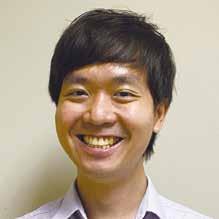
Sam’s Mozzie Adventure allows players to travel through four different scenarios. It triggers them to click on potential dengue breeding sites, then take action to rectify the problem.

First-time dengue infections can be severe, particularly among the elderly and people with pre-existing medical conditions. When these groups of people are re-infected, there is a higher probability of severe dengue. Dengue haemorrhagic fever can cause patients to suffer internal bleeding, shock and even death.
A dengue vaccine has been approved by the Health Sciences Authority (HSA) for the prevention of dengue in individuals aged 12 to 45 years with laboratory-confirmed evidence of previous dengue infection. The recommended age range is based on the epidemiological situation in Singapore and after consideration of the risk-benefit analysis by the local authority.
However, the vaccine is unsuitable for those who have not been previously infected, as it is associated with an increased risk of severe dengue in those who contract this naturally after vaccination. Other factors that may preclude individuals from being administered the dengue vaccine include
NEA campaigns over the years have helped to educate and raise community awareness of dengue vector control. To complement these efforts, a serious game built for learning and education has been co-created by a team in SHP, headed by Dr Tan and mobile application developers from AI Innovation Labs.
Available for download from the Apple App Store and Google Play, Sam’s Mozzie Adventure allows players, in the role of a schoolboy named Sam, to travel through four different scenarios. The game triggers players to click on potential dengue breeding sites (vases, potted plants, clogged gutters) and take action to rectify the problem. A player earns points for correct answers or actions; for wrong moves, a player would lose points or be required to repeat the task.


The effectiveness of this engaging game in educating people about dengue prevention was evaluated in a study with over 370 volunteers at Sengkang Polyclinic. Participants were randomly allocated to two groups; those in the intervention group played the game, while those in the control group visited a website to learn more about dengue prevention. Participants in both groups had scores for Knowledge, Attitude and Practice (KAP) higher than the baseline, but the mean difference in score was greater when assessing participants in the intervention group.
Based on this promising outcome, the SHP team is working on securing funding to enhance the game. For instance, over 84 per cent of participants in both groups expressed interest in dengue vaccination, so future iterations of the game may include an in-game feature to identify suitable vaccination candidates and work with primary care clinics to provide the vaccination. The team is currently seeking collaborations with NEA to promote the game to the general public and in schools.
“Gaining knowledge about dengue is the first step to winning the battle against dengue,” said Dr Tan. Beyond dengue prevention, he sees the potential of serious games in helping the general population to manage chronic diseases such as diabetes, high blood pressure and high cholesterol through bite-sized steps.
07 InFocus
Scan the QR code to view a video of the game.
Tiny microbes, big impact
Professor Sven Pettersson, Director of the ASEAN Microbiome Nutrition Centre, shares why gut microbes are crucial for our well-being.
by Elena Owyong
The microbes in your body are part of you, they are us. Without them, you and I would not be sitting here,” said Professor Sven Pettersson, Principal Investigator, Department of Research, National Neuroscience Institute (NNI).
The microbes that Prof Pettersson refers to are the indigenous bacteria that reside in our bodies. Studies have shown that gut microbes are essential as they regulate and communicate with the body’s organs. They are connected to almost all organs and functions, including metabolism, immunity, locomotion and behaviour. That is, they need a host (you) and we need them to keep our body functions in balance. The word gut microbiome refers to all the microorganisms and all the molecules they secrete.
its director, is funded by the Jeffrey Cheah Foundation and supported by the UK Dementia Research Institute
The AMNC research vision is to identify how gut microbes communicate with our organs in the body with a strong focus on the gut-brain axis. As such, the team seeks to identify novel gut-microbe-linked biomarkers associated with the risk of accelerated ageing and/or contracting neurodegenerative diseases. The Centre will work closely with the local food industry to develop proof-ofconcept solutions involving food products that guide gut microbes to slow the ageing process and support human health. To accomplish these objectives, the AMNC has been integrated into SingHealth medical cluster to optimise the communication between healthcare providers and the experimental scientific team.
The power of gut microbes
“Unlike our genes, gut microbes are malleable and respond quickly to our diet,” says Prof Sven Pettersson.
The pillars of the ASEAN Microbiome Nutrition Centre (AMNC)
To understand how gut microbes impact organ function during health and disease by:

Using systems biology and omicprofiling to identify novel biomarkers that identify individuals with accelerated ageing and risk of contracting disease
Undertaking mechanistic studies, using animal models and identifying signalling pathways that regulate brain function, including disease studies linked to Parkinson’s disease and dementia
Translating the results from AMNC to local food industrial partners that introduce food products guiding gut microbes to slow down biological ageing
Biological Ageing vs Chronological Ageing
While chronological age is time-based, biological age measures the speed of organ decline in the body. This means that a person who is 50 years old may have organ functions that are younger or older than 50, depending on their lifestyle and gut microbes.
To better understand how gut microbehost interactions regulate human health and ageing, Prof Pettersson and his team at NNI partnered with Malaysia’s Sunway University to establish the ASEAN Microbiome Nutrition Centre (AMNC) in June 2022. The centre, which Prof Pettersson heads as
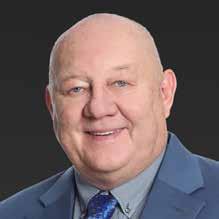
The last decades of research have demonstrated the importance of gut microbes in regulating the function or our organs in the body. Citing an example, Prof Pettersson said: “Microbes communicate with our own communication systems, including the bloodstream, bile acid, lymphatic system and the nervous system. Since 30 per cent of the products in the
AMNC performs research from the hypothesis that gut microbes regulate biological ageing through secretion of microbial metabolites, and that biological age is a more accurate reflection of how well our organs are functioning as we age.
bloodstream are of microbial origin, there is an enormous ability of microbial metabolites to reach distant organs outside the intestine and thus influence their daily functions.
The secreted metabolites produced by microbes act as communicators to transmit information from the bacteria to the organ of interest. The organ, in turn, releases a response that is received by the gut microbes and this response can be supporting health or be associated to a disease. Prof Pettersson and his team are convinced that understanding gut microbe communication mechanisms that support human health is essential if we are to identify individuals at risk of contracting disease, including neurodegenerative diseases and dementia.
“The AMNC is a think tank to generate research and translate the results into the healthcare community through pilot clinical trials to evaluate how gut microbes can be used as a target intervention,” said Prof Pettersson. “Unlike our genes, gut microbes are malleable and respond quickly to our diet, so a specially designed diet can be used to guide the microbes to benefit a person’s health.”
08 InFocus
•
Plant-Based
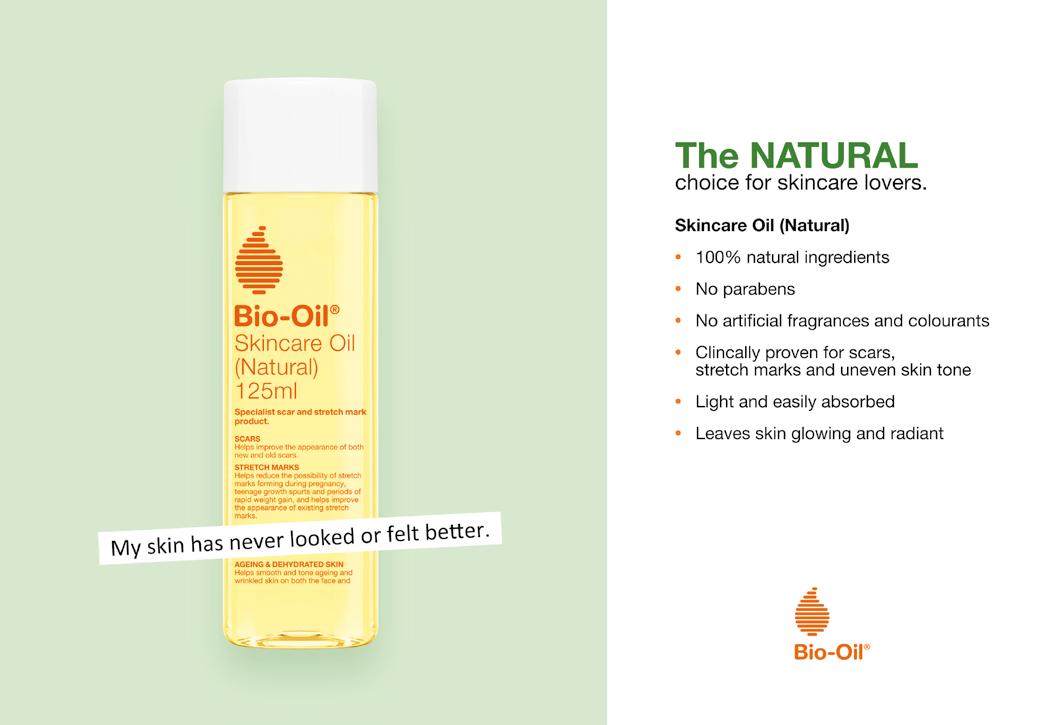
•





Age Proof Your Joints Your Joints Deserve To Be Healthy With The Right Nutrients
Your Stiff Joints
Cools Painful Joints
Lubricates Your Joints
Soothes Joint Discomfort
Joint Motion
Supports Mobility And Flexibility
Promotes Joint Recovery
Supports Healthy Immune Response
Lubricates Eases
•
•
•
Repairs Improves
•
•
•
Protects
Antioxidants
Provides Antioxidant Protection
•
Reduces Uric Acid Build-up
Supports Healthy Joints And Cartilages Visit www.kordels.com.sg for more information
Screening early is key
by Sol E Solomon
Today’s modern lifestyle predisposes people to chronic illnesses such as diabetes, hypertension and high cholesterol. Many of these diseases can be detected early through health screening, and then addressed to prevent complications such as heart disease, stroke and kidney failure.
Health screening uses tests and examinations to detect diseases early in people who look or feel well. It is different from diagnostic tests, which are done when someone is already showing signs of a disease.
There are two broad categories of screening tests, says Clinical Assistant Professor Christopher Chang, Senior Consultant, Department of Care and Health Integration, Changi General Hospital (CGH). Category 1 screening tests are beneficial for everyone. Doctors assess an individual based on their medical history and lifestyle to identify potential risks. They include:
• Physical examinations to assess blood pressure and body mass index
• Blood glucose tests to check for diabetes
• Blood cholesterol tests to check for high cholesterol and risk of cardiovascular conditions

Recommendations
Obesity
18 years and above
Test: Body mass index (BMI): height and weight
Frequency: Once a year
Diabetes Mellitus
40 years and above
Test: Fasting glucose or HbA1c: blood test
Hypertension
• A colonoscopy or testing a stool sample for the presence of small amounts of blood in the faeces to screen for colorectal cancer among individuals aged 50 years and above
• Pap smear or human papillomavirus tests for women aged 25 to 69 years who have had sexual intercourse to screen for cervical cancer
• Mammograms for women aged 40 years and above to screen for breast cancer
Category 2 screening tests are beneficial for some and the decision for such screenings is made on an individual basis depending on the person’s risk profile such as smoking. They include:
• Liver cancer screening for Hepatitis B carriers
• Bone Mineral Density scans for individuals with high osteoporosis risk
• Hearing tests for individuals who have been exposed to excessive noise
All bases covered
Under the Screen for Life – National Health Screening Programme covered under the Community Health Assist Scheme (CHAS), participating CHAS General Practitioner clinics conduct only Category 1 screening tests.
At CGH, screening packages for both categories are offered. CGH’s screening programme also includes a risk assessment by its doctors to determine what Category 2 screening tests are required or appropriate for individuals.
Screening at CGH is conducted over two outpatient visits. On the first visit, doctors assess the person’s medical conditions, risk factors for various diseases and current health status. The doctor will also advise which screening package is more suitable for that person. Depending on the screening package selected, the tests will take two to four hours to complete.
The second visit takes place one to two weeks later. During this session, a medical report on the test results and overall health status will be shared, followed by lifestyle counselling on how to improve or maintain good health. If necessary, doctors will refer the person to specialists for further evaluation and management.
“Early treatment and good control of your condition can result in better outcomes and prevent or delay serious complications. If the screening tests are normal, it is important to recognise that a
Clinical Assistant Professor Christopher Chang advises that there are two broad categories of screening tests. Tests in the first category are beneficial for everyone, while tests in the second category are meant for people with certain risk profiles.
Colorectal Cancer
50 years and above
Test: Faecal Immunochemical (stool test)
Frequency: Once a year
Additional tests for women
Test: Blood pressure measurement
Frequency: Once every two years; more frequently if high risk
Hyperlipidaemia
40 years and above
Test: Fasting or non-fasting lipids: blood test
Frequency: Once every three years; more frequently if high risk
18 years and above OR
Test: Colonoscopy
Frequency: Once every five to 10 years
Ms Lim Poh Suan, a patient of the CGH Breast Centre, shares her personal experience on early health screening and how it has helped her. Why did you go for health screening and what did it detect?
An annual routine breast screening led to the early discovery of an anomaly in my left breast. The screening showed some calcification, the hardening of tissue or other material due to deposition of calcium compounds in the body. Associate Professor Tan Su-Ming suggested that I do a biopsy to identify whether the calcification was benign or malignant. I was apprehensive initially, but decided to heed Assoc Prof Tan’s advice. The results of the biopsy showed that the calcification was malignant, although the lump was pretty small. I was shocked. decided to have the lump removed as I did not want it to bother me again at a later stage. I also decided to go for a mastectomy.
Cervical Cancer (for women
who have had sexual intercourse)
25 years and above
Test: Pap Smear
Frequency: Once every three years
Breast Cancer
40–49years
Test: Mammogram
Frequency: Once a year
30 years and above
Test: Pap Smear
Frequency: Once every five years
50–69 years
Test: Mammogram
Frequency: Once every two years
Contact your nearest GP clinic or hospital to find out more about health screening. For more information on CGH’s health screening packages*, contact its Appointment Centre at 6850 3333 (Operating hours: Mondays–Fridays, 8.30am–5.30pm; Saturdays, 8.30am–12.30pm; closed on Sundays & Public Holidays).
*Currently, institutional health screening programmes such as those offered by CGH are not covered by CHAS or other forms of subsidies. All screening packages at CGH are charged at the prevailing rates and payment can be made in cash, NETS or credit cards. Medisave can be used for standard screening mammogram for Singapore citizens and Permanent Residents aged 50 years and above.
one-off screening can only pick up health conditions that are present at the time of screening. It is thus vital to continue with regular screening tests at the recommended frequency,” Clin Asst Prof Chang said.

High incidence rate
Colorectal, breast and cervical cancers are some of the most common cancers in Singapore. According to the guidelines from the Screening Test Review Committee, Academy of Medicine Singapore, women between 50 and 69 years should undergo

mammogram screening for breast cancer every two years; women between 40 and 49 years can consider screening annually.
“The incidence of breast cancer rises sharply for women from the age of 40, and tends to be more aggressive in women aged 40 to 49. Women aged below 40 are also advised to conduct breast self-examination and seek medical attention if they detect any change in their breast,” said Associate Professor Tan Su-Ming, Head & Senior Consultant, Division of Breast Surgery, CGH.
Share with us your health background Except for occasional headaches, I am generally in good health and have no serious health issues. However, I was on oral endocrine therapy for a short period of time.
Did screening early help to manage your condition?
The procedure was done in 2004. The early screening allowed me to detect the cancer at a very, very early stage. The resultant course of action also meant that did not require any chemotherapy or radiation treatment. The operation and recovery were quick and fuss-free. did not have to take any medication or undergo chemotherapy. Assoc Prof Tan scheduled regular check-ups with me; in the beginning, the visits were at closer intervals, but now I only have to visit her annually. After more than 19 years, am thankful that I went for the annual screening and detected the problem early. Also, I am confident that I had made the right decision to have the mastectomy. would recommend anyone who is still unsure of health screening to go for it. It would take a huge load off your mind and allow you to take action should the need arise.

Breast and colorectal cancers are among the most frequently occurring cancers among women in Singapore, says Associate Professor Tan Su-Ming.

I 10 HealthierSG 11 HealthierSG
Even if you appear and feel well, you should undergo health screening.
An unseen side of nursing
The opening of the chest cavity, the fragility of human anatomy, the race against time — these activities of an operating theatre once held the rapt attention of a particular teenager.
“When l was deciding what course of study to pursue in polytechnic, my sister, who is an Operating Theatre (OT) nurse, shared her work experiences with me,” recounted Haryana Binte Zulkifli, Assistant Nurse Clinician, Sengkang General Hospital (SKH). Haryana’s nursing journey has been fuelled by her fascination with the OT and the unseen aspect of patient care.
Working behind the scenes
As an Assistant Nurse Clinician, Haryana specialises in burns, oral and maxillofacial surgery, plastic surgery, and ear, nose and throat surgery. Her role as a perioperative nurse involves providing crucial assistance during surgical operations ensuring the sterility of the environment and surgical instruments and safeguarding the patient’s rights and well-being.
As a perioperative nurse, Haryana takes on significant responsibilities. As a patient advocate, she is entrusted with perioperative care of patients undergoing surgery, a role that demands utmost accountability and attention to detail. This includes meticulous planning and coordination to ensure that all instruments, equipment and supplies are available for surgery in a safe environment. Patient safety is always at the forefront as she serves to safeguard patients’ rights during vulnerable moments.
The proficiency of a perioperative nurse extends beyond the mastery of technical roles for complex and multifaceted procedures. With her deep understanding of surgeries and her ability to proactively anticipate the needs of surgeons, her expertise allows her to guide the surgical team to focus on tasks with confidence knowing everything is well organised.

Improving the healthcare experience
Haryana’s dedication to improve the overall patient experience took her nursing journey beyond the OT. In 2019, she received funding from SingHealth Fund Foundation and Ministry of Health to undergo an overseas training programme at Chang Gung Memorial Hospital in Taiwan. Over four weeks, the dedicated nurse made detailed observations of holistic practices she could adopt to implement in SKH.
“As part of pre-training, I took up basic conversational Mandarin classes and learnt more about Taiwanese culture to better understand and communicate with our Taiwanese counterparts,” she said. During the training, she attended meetings with surgical team members to discuss craniofacial surgery. “I also had the opportunity to share my experience and knowledge of Lefort sugery in SKH with
the team of Taiwanese nurses, putting up a PowerPoint presentation in Chinese with the help of the senior nurse manager there,” she said, adding that the experience gave her the confidence to push beyond her comfort zone.
Lefort surgery is a form of corrective jaw surgery commonly used to address emergency cases such as fractures, facial deformities, malocclusions and misalignments in the jaw and teeth that can cause chewing or eating problems. While Haryana’s self-initiated guide was intended for new nurses to familiarise themselves with the surgery, it was also conceptualised to apply to patients with obstructive sleep apnoea (OSA).
“Previously, Lefort surgery was not used for patients with OSA. Now, we have patients with OSA who are going through the pre-surgical stage and will undergo Lefort surgery in the next one to two years,” she explained.
The guide developed by Haryana continues to help nurses understand the approach by championing best practices and innovation. She ensures patients receive the highest standard of care and that their journey towards recovery is optimised. These contributions showcase her commitment to continuous learning and elevating of the healthcare experience.
“I learned various ways of execution, such as using different instruments and implants at various stages of surgeries, and sourced for similar instrumentation with the multidisciplinary team,” said Haryana. In particular, she was impressed by her overseas counterparts’ expansive scope of work and autonomy in decision-making for patient treatments.
Recovery from the other side
With 14 years of nursing experience, Haryana appreciates the support of her supervisors and
Assistant
said that her decision to pursue nursing was due to her fascination for the activities that take place inside an operating theatre. Her sister, who is a perioperative nurse, was integral in Haryana’s journey.
Haryana Binte Zulkifli Assistant Nurse Clinician, Sengkang General Hospital

colleagues in helping her to put her best foot forward each day. “Working in an OT can be stressful, but it is rewarding when we have a good team,” she said.
Haryana reserves her time outside of work for her family, including two children and another on the way. An enjoyable day with the family takes the form of a leisurely cycle around Coney Island in the morning and winding down with a movie at night.
“Days off are precious for self-care, especially when a surgery can last more than 15 hours!”
Haryana’s journey as a perioperative nurse exemplifies the profound knowledge and skills required for this role in the OT. Her dedication and mastery behind the scenes truly make her one of the unseen heroes in the nursing profession.

12 People
Nurse Clinician Haryana Binte Zulkifli
Although hidden from the public eye, the work of Operating Theatre nurses to safeguard the health of every patient is imperative.
by Vicki Yang
I learned various ways of execution, such as using different instruments and implants at various stages of surgeries, and sourced for similar instrumentation with the multidisciplinary team.
Stepping up care to go home
SingHealth Community Hospitals’ work with the community takes patient care to another level.
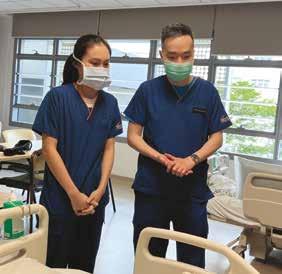 by Associate Professor Gan Wee Hoe, CEO, SingHealth Community Hospitals
by Associate Professor Gan Wee Hoe, CEO, SingHealth Community Hospitals


Whenever I share that I work at SingHealth Community Hospitals (SCH) with people I meet, they often respond, “Oh, you’re working in a step-down care facility.”
Let me put this in perspective. A step-down care institution provides an intermediate level of care between a higher acuity facility (e.g. a general hospital) and care in the community (e.g. general practitioners (GPs)). By the time patients are transferred to a community hospital, they are more stable medically and require less resources, hence care is also
more affordable. SCH manages patients with a spectrum of needs, ranging from sub-acute medical conditions and dementia to those requiring rehabilitative and palliative care.
While this is conventionally perceived to be step-down care, it gives the unintended impression that care at a community hospital equates to slow medicine, slow nursing and slow rehabilitation. At SCH, this is far from true.
A holistic care plan
During patients’ recovery and rehabilitation journey, there are appropriate care partners that step up care at every point.
Take Mr Tan (not his real name), for example, who sustained a hip fracture. As he requires surgery, an acute hospital is the appropriate care partner to deliver this intervention. Post-surgery, early mobilisation and intensive rehabilitation are key to reduce de-conditioning and restore functional mobility, and the appropriate care partner now changes to SCH. The SCH care team works with Mr Tan to achieve his health goals so that he is able to walk independently again and resume everyday activities, such as meeting his friends at the kopitiam.
While in SCH, Mr Tan can participate in social prescribing activities curated by our Well-being Coordinators. Social prescribing, as opposed to prescribing medications, is an approach that connects people to activities, groups and services in their community to
meet the practical, social and emotional needs that affect their health and well-being1
By doing so, SCH steps up care beyond just addressing the medical needs of our patients to encompass health-social integrative care.
Upon Mr Tan’s discharge from the community hospital, his care is transferred to community providers like his family physician, community nurses and social care partners, who will continue to keep him in good health, with the aim to reduce readmissions to the hospital.
From Mr Tan’s health journey, we see that there is a stepping up of care at every stage, including at the community hospital. ‘Step-down care’ therefore can be misleading; in my opinion, ‘continuing care’ more aptly describes the care delivered by SCH’s doctors, nurses and allied health professionals.
SCH is unique because it is the nexus between acute hospitals and the community. Our name includes both ‘hospital’ and ‘community’. Our raison d’etre is therefore inextricably tied to caring for patients who often have complex medical and social needs, optimising their well-being and successfully transitioning them back home and into the community. This is a tall order, but one that challenges, motivates and reinvigorates the SCH team every day.
En route to a healthier Singapore
Against the backdrop of a rapidly ageing population, SCH is preparing to be community hospitals of the future (CHoF). We envisage CHoF to enable direct patient admissions from the community, such as through GPs, instead of requiring patients to be first admitted to the acute hospital. With a highly skilled healthcare team, CHoF will also be able to manage patients with higher complexity sub-acute conditions, thus freeing up acute hospital beds for those with serious medical ailments. Technology, such as tele-rehabilitation and tele-monitoring, will be harnessed to shorten community hospital stays while allowing part of the rehabilitation to take place in the patient’s home.
The role that community hospitals play in Singapore is set to expand in the coming years. Embedded within SCH’s DNA is the principle of person-centred care, focusing care on the needs of the individual rather than on only what the doctor thinks is best for the patient; as well as the spirit of innovation, where we will constantly seek to reimagine and transform care.
The next time I tell people that I work at SCH, I hope they will share stories about their loved ones receiving excellent care at our community hospitals, and how they have a deeper understanding of the impact that social conditions have on health. There is a quote from the movie, Turbo: “No dream is too big, and no dreamer is too small!” That inspires me to believe we can be a worldclass community hospital.
1 Source: National Health Service, England
13 People
Associate Professor Gan Wee Hoe checking in on a patient (below) and on a ward round (right).
Associate Professor Gan Wee Hoe CEO, SingHealth Community Hospitals
‘Step-down care’ therefore can be misleading; in my opinion, ‘continuing care’ more aptly describes the care delivered by SCH’s doctors, nurses and allied health professionals.
SCH was established in 2017 and comprises three community hospitals, namely Bright Vision Community Hospital, Outram Community Hospital and Sengkang Community Hospital. It is, to date, the only community hospital group in Singapore.
From defence to offence
When you have sepsis, chemicals released by your body’s defence mechanism trigger inflammatory responses in their attempt to kill invading microorganisms.
by Candice Cai, with
Professor Wong Gee Chuan, Senior Consultant, Department of Haematology, Singapore General Hospital
What is sepsis?
Sepsis is the body’s extreme response to an infection. It is a life-threatening medical emergency due to complications arising from an infection. This can happen, for example, when bacteria from an infection enter the bloodstream (septicaemia) and spread throughout the body.
With sepsis, chemicals released by the body to combat these microorganisms trigger inflammatory responses. In severe cases, blood flow to vital organs like the brain, heart or kidneys can be impaired. This in turn can lead to tissue damage, multi-organ failure and even death if not treated quickly enough.
Common causes
Sepsis stems from an infection by bacteria, viruses, fungi or even polymicrobial (various combinations of these microorganisms).
Common types of infections that can lead to sepsis include infections in the urinary tract, lung, skin and gastrointestinal tract.
Early and advanced symptoms
As sepsis begins with an infection, the early symptoms can be non-specific or may be localised to the site of infection.
Non-specific symptoms include feeling fatigued, having loss of appetite, feeling “warm”. These are signs that an infection may be present within the body. A medical assessment is required to confirm infection or sepsis.
Symptoms of sepsis may be localised to the area of infection. In skin infections, for example, the surrounding skin around the wound may become red, swollen and painful. A urinary tract infection (UTI) can present with frequency or urgency, or pain in passing urine.
If sepsis is left uncontrolled, the patient can experience a worsening of symptoms — an increased heart rate, shortness of breath, confusion or disorientation, fever and cold or clammy skin. At its most severe, the patient may suffer multi-organ failure and septic shock. The mortality rate at this point is often high.
Early symptoms
Advanced symptoms
Who is at risk?
How severe an infection becomes and whether it leads to sepsis depends on many factors, including the type, severity and location of the infection, and the age and health condition of the patient.
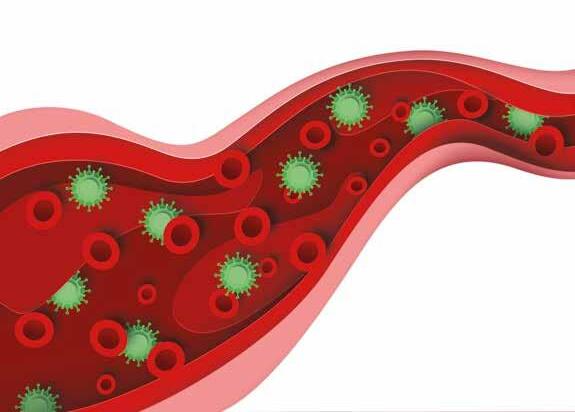
Anyone can develop sepsis. However, people who are at greater risk of developing more severe infections include those who:
Are older (e.g. over 65 years old)
Are obese
Have chronic medical conditions (e.g. diabetes, lung disease, kidney disease, cancer)
Are immunocompromised (e.g. cancer patients on chemotherapy, non-cancer patients requiring drugs that affect immune system e.g. steroids)
Have genetic immunodeficiencies
People who were hospitalised before are also more susceptible to contracting nosocomial infections (healthcare-associated infections) due to their altered human microbiome from staying in the hospital.
Feeling “warm”
Localised effects
When to seek treatment
In general, it is advised to seek medical help for any suspected infection early so that it can be treated before the condition worsens. This is especially so if the patient is elderly, immunocompromised or has existing comorbidities. In such cases, the patient should see a doctor as soon as possible if they are feeling unwell, including when the symptoms are non-specific.
Treatment
When diagnosed early, infections can be expeditiously treated with appropriate medications (e.g. antibiotics for bacterial infections). More extensive treatments may be required if the condition has progressed. Early assessment and treatment give the best outcome.
12 AtAGlance
contributions from Associate
of breath
heart rate
Fever
or disorientation
of appetite
Shortness
Increased
Cold and clammy skin
Confusion
Fatigue Loss
Urinary Tract Skin Lung Gastrointestinal Tract 13 September is World Sepsis Day
With estimated costs and other information sent to them via an SMS link, patients can discuss with their family and make informed decisions before their arrival at
Surgery costs step-by-step
Patients scheduled for surgery will have details sent to them via SMS ahead of time, and they can consider what works best for them using detailed estimates on their Health Buddy app.
Undergoing surgery, no matter how minor, can be a scary prospect. Adding to the fear and anxiety is the worry about costs.
While patients have the process explained to them in detail, they may not fully understand or remember what they are told. For Singapore General Hospital (SGH) patients, once surgery has been confirmed, a series of steps will be set in motion to get them to think about their planned procedure and consider the costs involved.
“Once patients are scheduled for surgery, an SMS with a link to their surgery-related information in Health Buddy (SingHealth's app for patients) will be sent to them. Clicking on the link takes them to the app, where information about their pre-admission and surgery appointments, estimated costs and other information are available,” said Ms Thirvchelvi Palaniappan K, Executive, Pre-Operative Services, Division of Pre-
Operative and Admitting Services (POAS), SGH. “Patients can then consider and discuss with their family members the ward and bed type they prefer before they come to SGH for their pre-admission counselling.”
Estimated costs
All aspects and details of the planned procedure are included in the care cost form, including the type of procedure that the patient will undergo, the scheduled dates, times and locations of various pre-surgery tests and investigations, financial counselling, post-surgery admission and estimated costs.
The form states what are included and excluded in estimating costs, including the average length of stay by patients undergoing specific procedures. For example, patients undergoing a total knee replacement usually stay for three days.. The costs of specialised investigations, however, are excluded, and these are accounted for in the final bill.
To make it easy for patients to decide on the ward type, there are tables showing clear comparison of the estimated total costs for A1, B1, B2 and C wards, rooms
(normal and specialised, like intensive care units), and treatments for those rooms, said Ms Chelvi.

The estimates include the subsidies that Singapore citizens and permanent residents enjoy, as well as the amount they may claim under their Medisave, private, employer, government or Medishield schemes. Bills are mostly settled through a combination
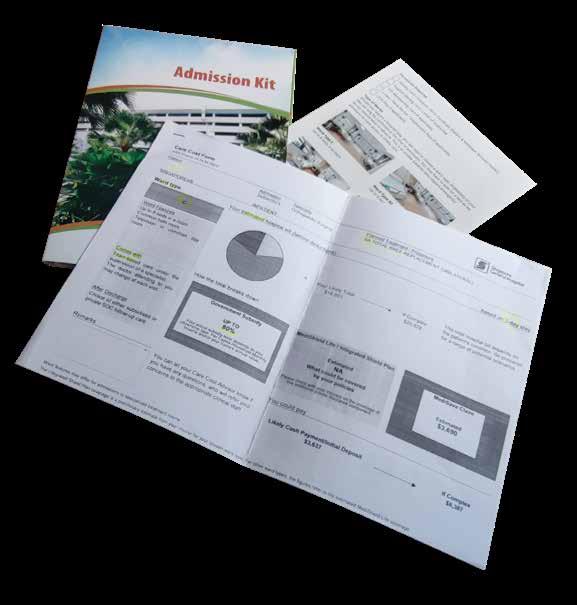
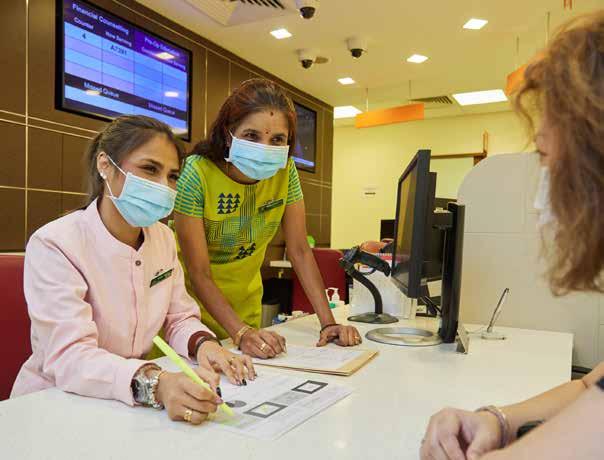
Patients opting for single or A1 class beds must offer a letter of guarantee from their insurer and place a cash deposit equal to the estimated difference if the amount in the guarantee does not cover the estimated bill. If they have outstanding bills from previous surgeries and treatments, they should settle them before surgery or opt for other ward types.
On the day of admission, go through another set of examinations; if they are found to be unfit, the operation will be postponed or cancelled. Tests and investigations done will have to be paid in cash as Medisave cannot be used. Should surgery be rescheduled to a date within eight weeks, pre-admission tests need not
For common procedures at SGH, such as knee replacements, giving birth and some day surgeries, packages that take the guesswork out of bills are available. These are for patients who are unlikely to suffer complications and need postsurgery step-down care. Besides surgery, the package includes standard lengths-ofstay, consumables, physiotherapy and post-surgery home visits.
If the patient faces complications during surgery, requires specialised post-operative care and further care in a step-down facility, he will be charged on a nonpackage basis that itemises services and treatments. A detailed final bill will then be sent to the patient a few weeks later.
Patients can change to another room type after surgery, and charges will be adjusted accordingly. Those who undergo surgery as private patients can change their status to subsidised for their postsurgery outpatient consultations. They will then be seen by any doctor in the surgical team under the supervision of the senior specialist. While private patients can opt for their preferred attending doctor, care in SGH, a teaching hospital, is always team-based.
15 HealthWatch
PHOTOS: VERNON WONG
Bills are mostly settled through a combination of Medisave, insurance and cash, says Ms Chelvi.
X-rays showing jaw misalignment and correction before and after orthognathic surgery respectively.

One bite at a time
by Vicki Yang
When it comes to straightening crooked teeth, dental braces or retainers are the first go-to solution. However, for people with severe misalignment in their jaws, a more major intervention — such as orthognathic surgery — may be required.
Orthognathic surgery, also known as corrective jaw surgery, aims to correct deformities or misalignment of the upper and lower jaws. These deformities and misalignments can result in malocclusions, which refer to conditions where the upper and lower teeth are misaligned when the mouth is closed — common forms include underbites, overbites or open bites.
have spacing or crowding issues in their teeth. An orthodontist oversees the first phase of treatment to position the teeth for an optimal bite through orthodontic treatment, such as dental braces, which can take up to two years, depending on the severity of the issue.
After the teeth are positioned properly, orthognathic surgery is carried out to correct the alignment of the jawbones. During the procedure, a surgeon will make cuts to the jawbones and reposition them. After surgery, patients must continue orthodontic treatment for approximately six months to sustain the improved and final alignment of the teeth. In older patients — such as patients with OSA, who are usually diagnosed at a later stage of life — orthodontic treatment may take longer.
“Most patients come in for treatment after their completion of growth as it will ensure post-surgical stability and lower risk of relapse,” says Dr Leonardo Saigo.
Orthognathic surgery can also address other conditions, such as facial injuries and severe obstructive sleep apnea (OSA). In cases of severe OSA, misaligned jaws can restrict the airway, leading to breathing difficulties. Surgery to reposition the jaws and widen the airway can ease breathing problems and alleviate OSA.
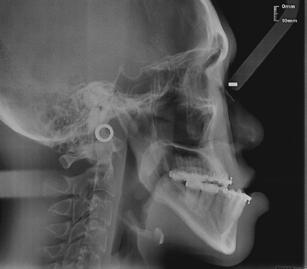
A multi-stage treatment process
Rather than a single procedure, orthognathic surgery is a comprehensive course of treatments combining both orthodontic and surgical approaches that can take years to complete. As orthognathic surgery is a major intervention, it is usually prescribed when patients experience difficulties in functional issues, such as chewing, biting or speaking properly.
According to Dr Leonardo Saigo, Consultant and Deputy Head, Department of Oral and Maxillofacial Surgery, National Dental Centre Singapore, patients who undergo orthognathic surgery typically

“At times, a surgery-first approach, where patients undergo orthognathic surgery without pre-operative orthodontic treatment, is possible,” said Dr Saigo. “This will reduce the treatment time significantly. However, the orthodontist and surgeon must assess if a patient is suitable for surgery first.”
Assessing suitability for surgery
While there is no age limit for orthognathic surgery, the treatment process for younger patients with underbites, overbites and open bites typically starts only after their period of growth has concluded. “Some patients who present early may be suitable for interceptive orthodontic treatment in the hope of avoiding the need for orthognathic surgery. However, it may not always be successful,” said Dr Saigo. “Most patients come in for treatment after their completion of growth as it will ensure post-surgical stability and lower risk of relapse.”
According to Dr Saigo, underbites have a higher incidence among Asians, affecting approximately 20 per cent of the population. If left untreated, severe underbites can lead
after
to ongoing biting issues or wearing out of teeth towards the back of the mouth at a faster rate. “Some patients may complain of difficulty articulating certain words due to the gap between the front teeth. Additionally, having a longer lower jaw may affect their self-esteem and confidence regarding their appearance,” said Dr Saigo. “We have had young patients who initially declined surgery due to various reasons, only to return for orthognathic surgery after a number of years, having realised that the condition actually has a direct and significant impact on their quality of life.”
Various forms of malocclusions or bite problems:
Open bites
These occur when the top and bottom set of teeth do not touch and have a space between them when the mouth is closed.



Underbites
These are characterised by the lower teeth and jaw protruding in front of the upper teeth and jaw.
Overbites
These are presented when the upper front teeth stick out further than the lower set of teeth and jaw.
16 HealthWatch
The jaw correction process goes beyond a single operation, often involving both orthodontic and surgical treatments over years.
before

Meds to pack on trips

If you have pre-existing medical conditions, like asthma or diabetes, you should pack slightly more than sufficient of your prescription to last the duration of the trip. For some medications, it is useful to take along documentation to show the need for them — some countries have very strict rules about carrying HIV (human immunodeficiency virus) treatments, for instance.
Food poisoning, respiratory tract infections and motion sickness are common travel illnesses, so pack small amounts of over-the-counter medications for diarrhoea, pain, headache, motion sickness, dressings, bandages and plasters. You can easily replenish them if necessary at pharmacies in the country you are visiting. If you are going on a longer trip and are unsure about vaccinations, visit your doctor or a travel clinic such as Singapore General Hospital’s (SGH) Travel Clinic for advice.
People do not get drunk faster onboard a plane. The amount of alcohol your body can manage is consistent, regardless of surroundings. The effects of the alcohol may be felt more easily if you are more tired, or have had a long day before the flight. Do note that alcohol is a good diuretic, so you can get more dehydrated. Drinking plain water is best.
Dr Piotr Chlebicki , Senior Consultant, Department of Infectious Diseases, SGH
For more travel tips, like whether it is necessary to wipe and sanitise your plane seat, tune in to the ‘Travel Health’ episode of the Perfectly Imperfect Health podcast series. Go to https://www.sgh.com.sg/about-us/newsroom/Pages/Perfectly-Imperfect-HealthPodcast.aspx or scan the QR code.


Blood pressure inconsistently high
I have a history of hypertension but my blood pressure is not consistently high, can I avoid taking medication? If I start on this medication, do I have to take it for the rest of my life? Will exercise help to lower my blood pressure? If so, which exercise is best? Also, what food should I avoid?
If you are already on medication for hypertension, do not
stop taking it without checking with your doctor first.
If your doctor has prescribed medication to manage your blood pressure, then it is likely that your blood pressure has been high for some time. Uncontrolled hypertension can lead to other health conditions such as heart attack, heart failure, stroke and kidney failure. The damage may occur over years but is usually irreversible. Thus, prevention is better than cure.
If you have already started on hypertension medication, it is likely that you will need to continue taking it for a long time. However, the need to continue hypertension medications may vary for different individuals and their health conditions. Thus, it is important to monitor your blood pressure regularly and consult your doctor to determine the appropriate course of action.
Exercising regularly does help to lower blood pressure. Aim to engage in aerobic exercises, such as brisk walking, jogging, swimming or cycling, for about 30 minutes three to five times a week.
For your diet, take less salt in the form of sauces, seasoning or gravy, and less red meats like beef and mutton. Eat more lean white meats like chicken and fish, as well as fruits and vegetables. Consume alcohol only in moderation, or not at all.
Dr Sun Jingfeng , Family Physician, SingHealth Polyclinics
18 AskOurExpert
What medications should I pack when going on holiday? And is it true that one should consume less alcohol than usual while on a flight because the altitude makes one drunk faster? Q uestion & A nswer
that it is more than okay for transplant patients to keep exercising to keep fit and healthy, even as the transplant procedure they underwent represents a major change in their lives?
Indeed, seven transplant recipients represented Team Singapore in April to participate at this year’s World Transplant Games in Perth, Australia, as a way of raising awareness of the importance of maintaining physical activity and leading a healthy lifestyle in the long-term management and well-being of transplant recipients. At the same time, the Games highlight the need for organ donation as the recipients bear testimony to. For many, their lives would have been cut short if not for the kindness and generosity of donors.
Ms Jamie Yeow and Ms Galina Ivanova have their husbands to thank, receiving a kidney and liver respectively from them, while Mr Yue Keng Siang received a liver from a deceased donor. All three, who underwent their transplants at Singapore General Hospital, won prizes at the Games in events that could be considered strenuous for many — tennis and badminton.

The Games can be a motivation for patients to strive towards full rehabilitation. Ms Ivanova was only able to resume playing tennis a year after her transplant, but she quickly caught up, entering competitions thereafter. Ms Yeow, meanwhile, trained several days a week in the year leading up to the Games. Mr Yue, who participated seven times in the Games, said competing is a way to remind himself to keep fit and healthy.
A deep sense of gratitude for receiving a new lease of life is also something that transplant recipients share. For Mr Yip Je Choong, a kidney transplant patient, that translates to a desire to help others. Together with another kidney transplant patient, Mr Teo, Mr Yip joined the SGH Beyond 200 Ride ’n Run (part of the hospital’s bicentennial celebrations) to help raise funds for the SGH Needy Patients Fund. They even set up a separate funding vehicle when they found out that more than half of the Fund goes towards supporting patients who need dialysis while awaiting an organ for transplant.
At the Games, Mr Yip participated in the Games’ 30km Cycle Road Race.
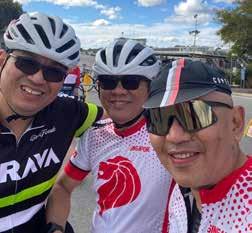
that there are new formal education opportunities for nurses? SingHealth’s College of Clinical Nursing (CCN) recently introduced a Master of Health Sciences programme with a specialisation in Organ Transplant Nursing, offered in partnership with Singapore Institute of Technology (SIT). It is anticipated to be the first such programme in Southeast Asia when launched in September 2024. Solid organ transplant nursing is a specialised field within SingHealth Nursing that focuses on protecting, promoting and optimising the health and abilities of both the transplant recipient and the living donor across their entire life span. This includes prevention, detection and treatment of illness and injury related to diseases treated by solid organ transplantation and conditions that may result from living donor donation. This new specialisation will ground nurses in concepts relating to the provision of nursing care and services to transplant recipients and donors. It also aims to be holistic, covering topics such as nutrition, exercise and even legal and ethical considerations in organ transplantation.

19 DidYouKnow
PHOTO: VERNON WONG





















































 by Associate Professor Gan Wee Hoe, CEO, SingHealth Community Hospitals
by Associate Professor Gan Wee Hoe, CEO, SingHealth Community Hospitals



















